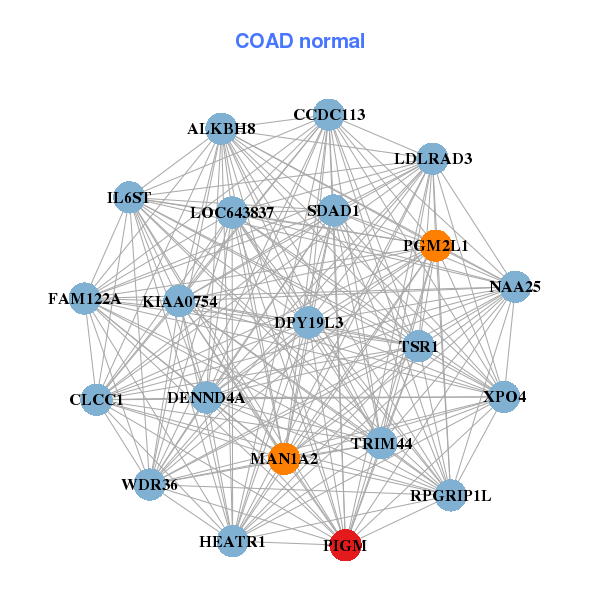|
||||||||||||||||||||
| |
| Phenotypic Information (metabolism pathway, cancer, disease, phenome) |
| |
| |
| Gene-Gene Network Information: Co-Expression Network, Interacting Genes & KEGG |
| |
|
| Gene Summary for PIGM |
| Basic gene info. | Gene symbol | PIGM |
| Gene name | phosphatidylinositol glycan anchor biosynthesis, class M | |
| Synonyms | GPI-MT-I | |
| Cytomap | UCSC genome browser: 1q23.2 | |
| Genomic location | chr1 :159997461-160001783 | |
| Type of gene | protein-coding | |
| RefGenes | NM_145167.2, | |
| Ensembl id | ENSG00000143315 | |
| Description | DPM:GlcN-(acyl-)PI mannosyltransferaseGPI mannosyltransferase 1GPI mannosyltransferase IPIG-M mannosyltransferasedol-P-Man dependent GPI mannosyltransferasephosphatidylinositol-glycan biosynthesis class M protein | |
| Modification date | 20141207 | |
| dbXrefs | MIM : 610273 | |
| HGNC : HGNC | ||
| Ensembl : ENSG00000143315 | ||
| HPRD : 15133 | ||
| Vega : OTTHUMG00000024081 | ||
| Protein | UniProt: go to UniProt's Cross Reference DB Table | |
| Expression | CleanEX: HS_PIGM | |
| BioGPS: 93183 | ||
| Gene Expression Atlas: ENSG00000143315 | ||
| The Human Protein Atlas: ENSG00000143315 | ||
| Pathway | NCI Pathway Interaction Database: PIGM | |
| KEGG: PIGM | ||
| REACTOME: PIGM | ||
| ConsensusPathDB | ||
| Pathway Commons: PIGM | ||
| Metabolism | MetaCyc: PIGM | |
| HUMANCyc: PIGM | ||
| Regulation | Ensembl's Regulation: ENSG00000143315 | |
| miRBase: chr1 :159,997,461-160,001,783 | ||
| TargetScan: NM_145167 | ||
| cisRED: ENSG00000143315 | ||
| Context | iHOP: PIGM | |
| cancer metabolism search in PubMed: PIGM | ||
| UCL Cancer Institute: PIGM | ||
| Assigned class in ccmGDB | C | |
| Top |
| Phenotypic Information for PIGM(metabolism pathway, cancer, disease, phenome) |
| Cancer | CGAP: PIGM |
| Familial Cancer Database: PIGM | |
| * This gene is included in those cancer gene databases. |
|
|
|
|
|
| . | ||||||||||||||
Oncogene 1 | Significant driver gene in | |||||||||||||||||||
| cf) number; DB name 1 Oncogene; http://nar.oxfordjournals.org/content/35/suppl_1/D721.long, 2 Tumor Suppressor gene; https://bioinfo.uth.edu/TSGene/, 3 Cancer Gene Census; http://www.nature.com/nrc/journal/v4/n3/abs/nrc1299.html, 4 CancerGenes; http://nar.oxfordjournals.org/content/35/suppl_1/D721.long, 5 Network of Cancer Gene; http://ncg.kcl.ac.uk/index.php, 1Therapeutic Vulnerabilities in Cancer; http://cbio.mskcc.org/cancergenomics/statius/ |
| REACTOME_METABOLISM_OF_PROTEINS | |
| OMIM | |
| Orphanet | |
| Disease | KEGG Disease: PIGM |
| MedGen: PIGM (Human Medical Genetics with Condition) | |
| ClinVar: PIGM | |
| Phenotype | MGI: PIGM (International Mouse Phenotyping Consortium) |
| PhenomicDB: PIGM | |
| Mutations for PIGM |
| * Under tables are showing count per each tissue to give us broad intuition about tissue specific mutation patterns.You can go to the detailed page for each mutation database's web site. |
| There's no structural variation information in COSMIC data for this gene. |
| * From mRNA Sanger sequences, Chitars2.0 arranged chimeric transcripts. This table shows PIGM related fusion information. |
| ID | Head Gene | Tail Gene | Accession | Gene_a | qStart_a | qEnd_a | Chromosome_a | tStart_a | tEnd_a | Gene_a | qStart_a | qEnd_a | Chromosome_a | tStart_a | tEnd_a |
| AA215640 | KRTCAP2 | 1 | 93 | 1 | 155144233 | 155144325 | PIGM | 91 | 439 | 1 | 159998972 | 159999323 | |
| BE843437 | PIGM | 31 | 241 | 1 | 160000558 | 160000768 | ZBTB7C | 231 | 430 | 18 | 45853170 | 45853369 | |
| Top |
| There's no copy number variation information in COSMIC data for this gene. |
| Top |
|
 |
| Top |
| Stat. for Non-Synonymous SNVs (# total SNVs=19) | (# total SNVs=9) |
 | 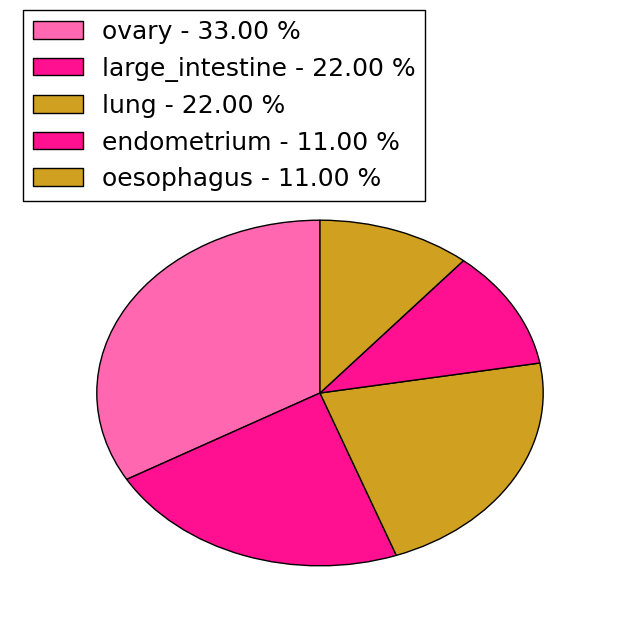 |
(# total SNVs=1) | (# total SNVs=2) |
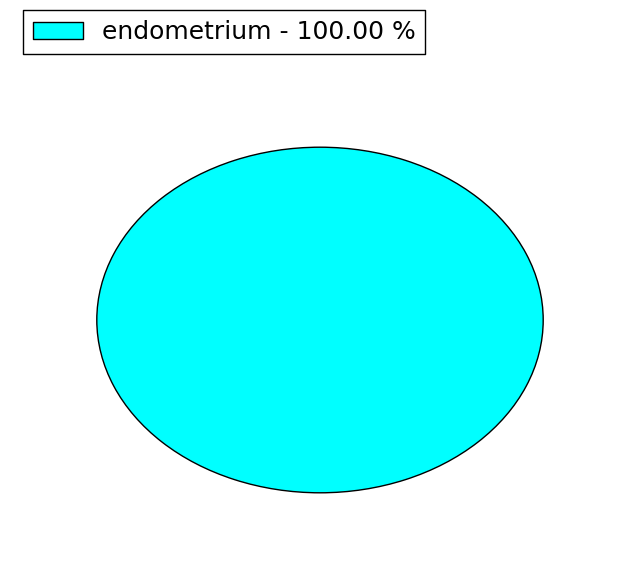 | 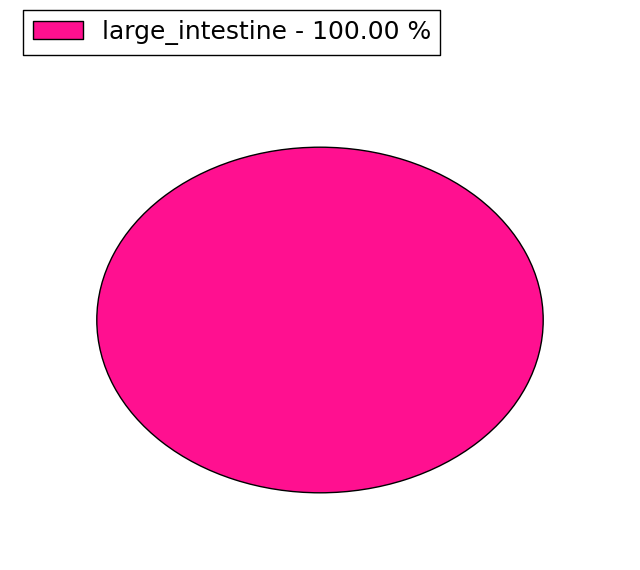 |
| Top |
| * When you move the cursor on each content, you can see more deailed mutation information on the Tooltip. Those are primary_site,primary_histology,mutation(aa),pubmedID. |
| GRCh37 position | Mutation(aa) | Unique sampleID count |
| chr1:160000335-160000335 | p.I399F | 2 |
| chr1:160000819-160000819 | p.T237T | 2 |
| chr1:160000820-160000820 | p.T237K | 1 |
| chr1:160001137-160001137 | p.W131C | 1 |
| chr1:160001474-160001474 | p.A19V | 1 |
| chr1:160000435-160000435 | p.F365L | 1 |
| chr1:160000853-160000853 | p.A226D | 1 |
| chr1:160001181-160001182 | p.L119fs*16 | 1 |
| chr1:160000512-160000512 | p.L340F | 1 |
| chr1:160000857-160000857 | p.R225G | 1 |
| Top |
|
 |
| Point Mutation/ Tissue ID | 1 | 2 | 3 | 4 | 5 | 6 | 7 | 8 | 9 | 10 | 11 | 12 | 13 | 14 | 15 | 16 | 17 | 18 | 19 | 20 |
| # sample | 1 | 1 | 7 | 2 | 1 | 5 | 1 | 2 | 3 | 6 | 1 | |||||||||
| # mutation | 1 | 1 | 9 | 2 | 1 | 5 | 1 | 2 | 3 | 6 | 1 | |||||||||
| nonsynonymous SNV | 1 | 1 | 7 | 1 | 4 | 2 | 4 | |||||||||||||
| synonymous SNV | 2 | 2 | 1 | 1 | 2 | 1 | 2 | 1 |
| cf) Tissue ID; Tissue type (1; BLCA[Bladder Urothelial Carcinoma], 2; BRCA[Breast invasive carcinoma], 3; CESC[Cervical squamous cell carcinoma and endocervical adenocarcinoma], 4; COAD[Colon adenocarcinoma], 5; GBM[Glioblastoma multiforme], 6; Glioma Low Grade, 7; HNSC[Head and Neck squamous cell carcinoma], 8; KICH[Kidney Chromophobe], 9; KIRC[Kidney renal clear cell carcinoma], 10; KIRP[Kidney renal papillary cell carcinoma], 11; LAML[Acute Myeloid Leukemia], 12; LUAD[Lung adenocarcinoma], 13; LUSC[Lung squamous cell carcinoma], 14; OV[Ovarian serous cystadenocarcinoma ], 15; PAAD[Pancreatic adenocarcinoma], 16; PRAD[Prostate adenocarcinoma], 17; SKCM[Skin Cutaneous Melanoma], 18:STAD[Stomach adenocarcinoma], 19:THCA[Thyroid carcinoma], 20:UCEC[Uterine Corpus Endometrial Carcinoma]) |
| Top |
| * We represented just top 10 SNVs. When you move the cursor on each content, you can see more deailed mutation information on the Tooltip. Those are primary_site, primary_histology, mutation(aa), pubmedID. |
| Genomic Position | Mutation(aa) | Unique sampleID count |
| chr1:160000819 | p.T237T | 2 |
| chr1:160000856 | p.R225L | 2 |
| chr1:160001019 | p.R419I | 1 |
| chr1:160001428 | p.V171L | 1 |
| chr1:160000712 | p.I399L | 1 |
| chr1:160001078 | p.A151V | 1 |
| chr1:160001446 | p.L394L | 1 |
| chr1:160000753 | p.S148S | 1 |
| chr1:160001086 | p.G291G | 1 |
| chr1:160001449 | p.W131C | 1 |
| * Copy number data were extracted from TCGA using R package TCGA-Assembler. The URLs of all public data files on TCGA DCC data server were gathered on Jan-05-2015. Function ProcessCNAData in TCGA-Assembler package was used to obtain gene-level copy number value which is calculated as the average copy number of the genomic region of a gene. |
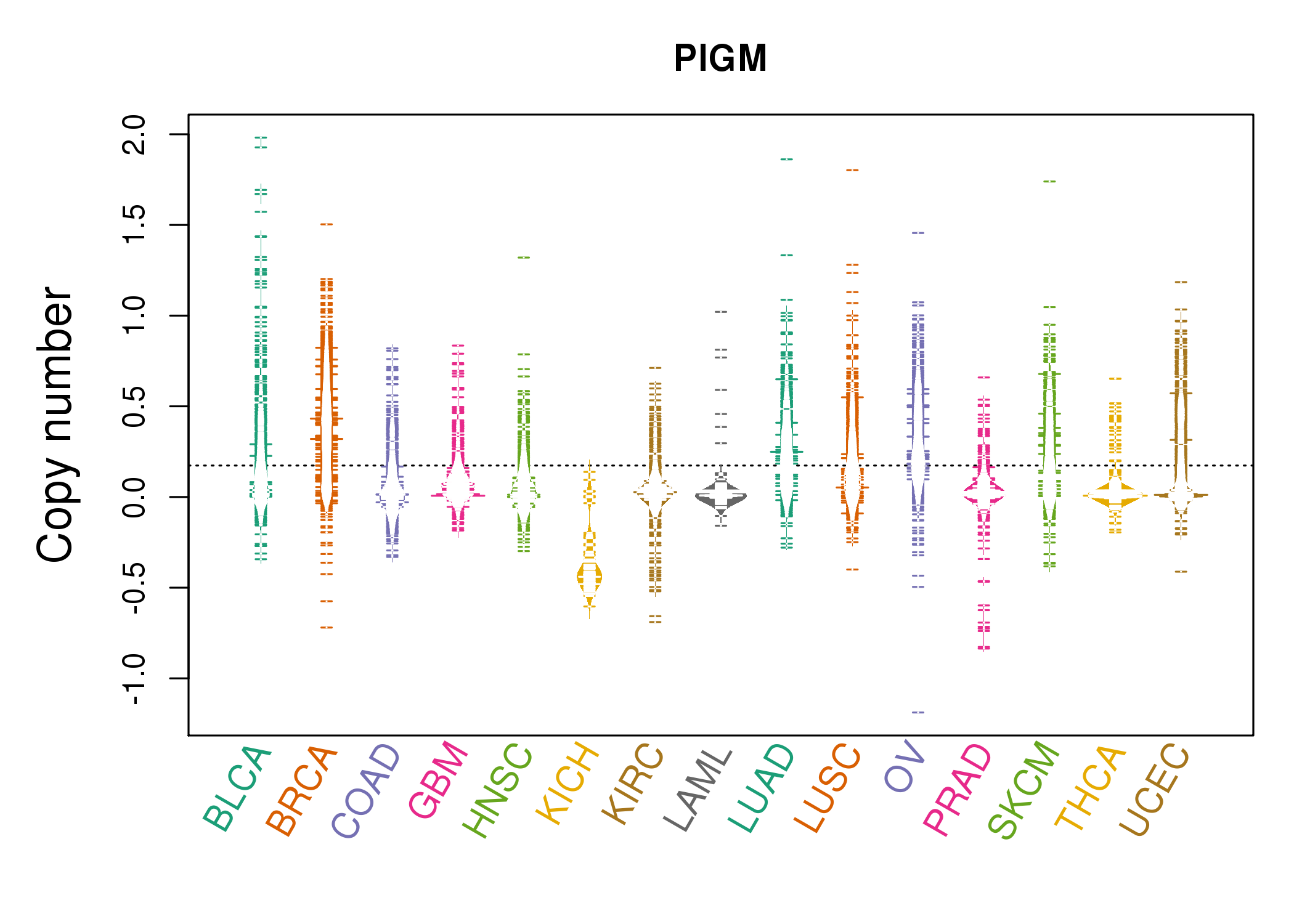 |
| cf) Tissue ID[Tissue type]: BLCA[Bladder Urothelial Carcinoma], BRCA[Breast invasive carcinoma], CESC[Cervical squamous cell carcinoma and endocervical adenocarcinoma], COAD[Colon adenocarcinoma], GBM[Glioblastoma multiforme], Glioma Low Grade, HNSC[Head and Neck squamous cell carcinoma], KICH[Kidney Chromophobe], KIRC[Kidney renal clear cell carcinoma], KIRP[Kidney renal papillary cell carcinoma], LAML[Acute Myeloid Leukemia], LUAD[Lung adenocarcinoma], LUSC[Lung squamous cell carcinoma], OV[Ovarian serous cystadenocarcinoma ], PAAD[Pancreatic adenocarcinoma], PRAD[Prostate adenocarcinoma], SKCM[Skin Cutaneous Melanoma], STAD[Stomach adenocarcinoma], THCA[Thyroid carcinoma], UCEC[Uterine Corpus Endometrial Carcinoma] |
| Top |
| Gene Expression for PIGM |
| * CCLE gene expression data were extracted from CCLE_Expression_Entrez_2012-10-18.res: Gene-centric RMA-normalized mRNA expression data. |
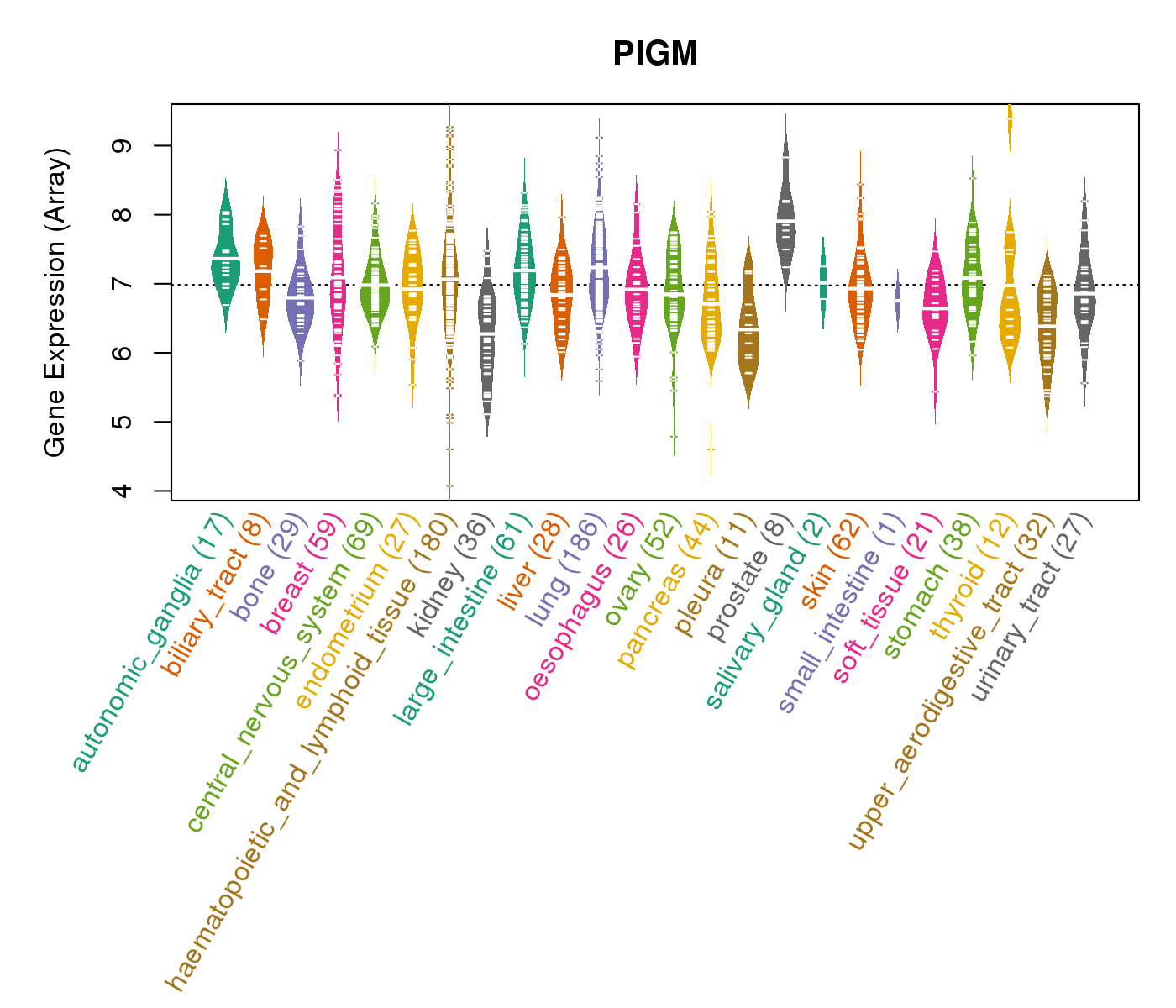 |
| * Normalized gene expression data of RNASeqV2 was extracted from TCGA using R package TCGA-Assembler. The URLs of all public data files on TCGA DCC data server were gathered at Jan-05-2015. Only eight cancer types have enough normal control samples for differential expression analysis. (t test, adjusted p<0.05 (using Benjamini-Hochberg FDR)) |
 |
| Top |
| * This plots show the correlation between CNV and gene expression. |
: Open all plots for all cancer types
 |
|
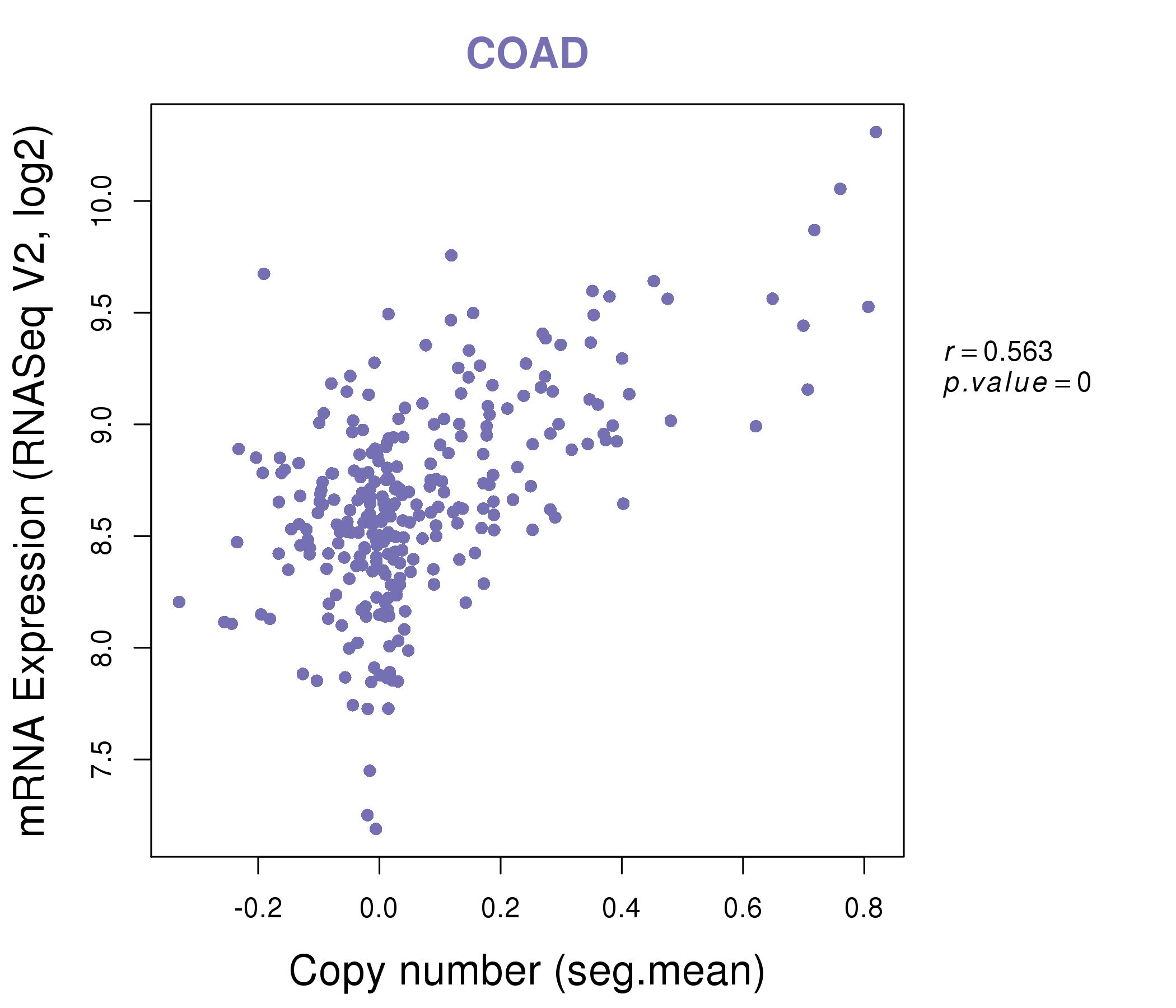 |
|
| Top |
| Gene-Gene Network Information |
| * Co-Expression network figures were drawn using R package igraph. Only the top 20 genes with the highest correlations were shown. Red circle: input gene, orange circle: cell metabolism gene, sky circle: other gene |
: Open all plots for all cancer types
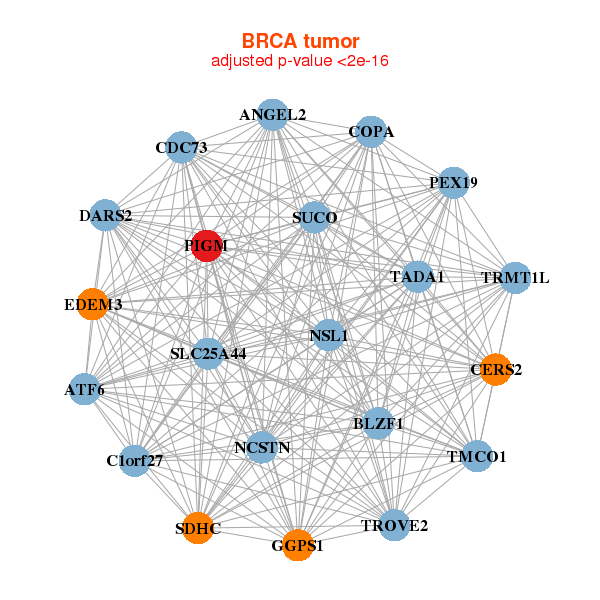 |
|
| ANGEL2,ATF6,BLZF1,TRMT1L,C1orf27,SUCO,CDC73, COPA,DARS2,EDEM3,GGPS1,CERS2,NCSTN,NSL1, PEX19,PIGM,SDHC,SLC25A44,TADA1,TMCO1,TROVE2 | AP1AR,SUCO,SMIM15,INIP,CNOT6,CMTR2,GALNT4, GOLPH3L,LZTFL1,NXT2,PIGM,POT1,PRRC1,RBBP9, PTBP3,SS18,TMEM168,TMEM33,TTC30A,VPS4B,ZNF260 |
 |
|
| ANGEL2,BCL9,DIEXF,TRMT1L,DCAF8,GPR89A,HEATR1, KLHL12,METTL13,MTR,PIGM,POGK,POLR3C,RAB3GAP2, SETDB1,STX6,TDRKH,UBE2Q1,UBQLN4,VANGL2,ZNF687 | ALKBH8,CCDC113,CLCC1,DENND4A,DPY19L3,FAM122A,HEATR1, IL6ST,KIAA0754,LDLRAD3,LOC643837,MAN1A2,NAA25,PGM2L1, PIGM,RPGRIP1L,SDAD1,TRIM44,TSR1,WDR36,XPO4 |
| * Co-Expression network figures were drawn using R package igraph. Only the top 20 genes with the highest correlations were shown. Red circle: input gene, orange circle: cell metabolism gene, sky circle: other gene |
: Open all plots for all cancer types
| Top |
: Open all interacting genes' information including KEGG pathway for all interacting genes from DAVID
| Top |
| Pharmacological Information for PIGM |
| There's no related Drug. |
| Top |
| Cross referenced IDs for PIGM |
| * We obtained these cross-references from Uniprot database. It covers 150 different DBs, 18 categories. http://www.uniprot.org/help/cross_references_section |
: Open all cross reference information
|
Copyright © 2016-Present - The Univsersity of Texas Health Science Center at Houston @ |









